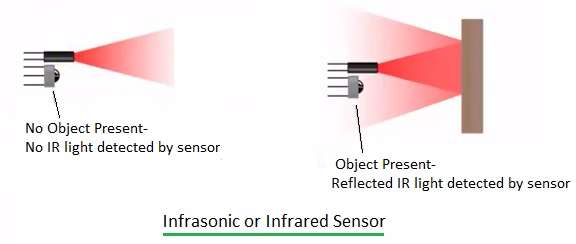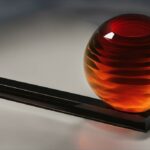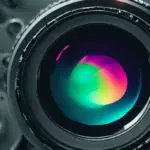Infrared radiation is a type of electromagnetic radiation with a wide range of applications, from healthcare to military defense. While it is an incredibly useful tool, it does have limitations. In this article, we will explore what these limitations are and how they can be addressed. We will also discuss the potential for infrared radiation to be used in other applications. So, if you’re curious about the limitations of infrared radiation, you’ve come to the right place!
Infrared has several limitations. First, it cannot penetrate certain materials, such as water and glass. Second, IR radiation can be blocked by certain materials, such as smoke and fog. Third, long-wavelength infrared (LWIR) signals can be absorbed by atmospheric gases. Fourth, infrared signals can be reflected off of certain surfaces, such as mirrors. Finally, infrared signals can be scattered by particles in the air, resulting in a decrease in the signal’s strength.

Contents
What Are the Limitations of Infrared Technology?
Infrared (IR) technology is a form of sensor technology that is used to detect the presence of an object or measure the temperature of an environment. Though it is a powerful tool, it also has some limitations that should be taken into consideration when it is used. This article will discuss the various limitations of infrared technology.
Limited Range
One of the main limitations of infrared technology is its limited range. Infrared sensors can only detect objects and measure temperatures within a certain range. The range of infrared sensors depends on the type of sensor and its power. For example, an infrared thermometer has a limited range and can only measure temperatures within a few degrees of accuracy. Similarly, infrared cameras have a limited range and can only detect objects within a certain distance.
Poor Visibility in Hazy and Foggy Conditions
Another limitation of infrared technology is that it is not very effective in hazy and foggy conditions. The infrared radiation emitted by the source is scattered by the haze or fog and therefore cannot be detected by the sensor. This makes it difficult to use infrared technology in such conditions.
Cannot Penetrate Through Solid Objects
Infrared radiation cannot penetrate through solid objects. This means that infrared sensors cannot detect or measure temperatures through walls or other solid objects. This limits the applications of infrared technology as it cannot be used to measure temperatures in enclosed spaces or on the other side of a wall.
Prone to Interferences
Infrared sensors can be easily interfered with by other sources of infrared radiation, such as sunlight and heat lamps. This can make it difficult to get accurate readings from the sensor. In addition, infrared sensors can be affected by other sources of electromagnetic radiation, such as radio waves, which can also lead to inaccurate readings.
Affected by Temperature Changes
Infrared sensors are affected by changes in temperature. This means that if the temperature of the environment changes, the readings of the sensor may not be accurate. This can be especially problematic in environments where temperatures fluctuate often.
Frequently Asked Questions
What is Infrared?
Infrared (IR) is a part of the electromagnetic spectrum, which is composed of waves of energy that travel at the speed of light. It is invisible to the human eye, but can be detected by various types of sensors, such as cameras, thermometers, and motion detectors. Infrared energy is emitted by all objects that have a temperature above absolute zero, which makes it a useful tool for imaging and monitoring the environment.
What Are the Limitations of Infrared?
Infrared has several limitations that make it less useful than other types of imaging or sensing technologies. Firstly, infrared is not able to penetrate certain materials, such as water, fog, or smoke, which can limit its effectiveness in certain applications. Additionally, infrared is unable to penetrate solid objects, so it must be used in open, unobstructed areas. Finally, infrared cameras and sensors are sensitive to sunlight and other sources of heat, which can lead to interference and false readings.
How Can Infrared Be Used?
Infrared is widely used in a variety of applications, ranging from surveillance and security to medical imaging and meteorology. Infrared cameras are capable of detecting small changes in temperature, which can be used to detect objects in the dark or to monitor the environment. Additionally, infrared thermometers are used to measure the temperature of objects or people from a distance.
What Are the Advantages of Infrared?
Infrared has several advantages that make it a useful tool for various applications. Firstly, infrared is non-invasive and can detect objects from a distance without making contact. Additionally, infrared is able to detect small changes in temperature, which can be used to identify objects or measure the temperature of people or objects. Finally, infrared is relatively inexpensive and can be used in a variety of environments, making it a popular choice for many applications.
What Is Infrared Imaging?
Infrared imaging is the process of using infrared sensors or cameras to capture images of objects or the environment. Infrared imaging is widely used in security, surveillance, and medical imaging applications. These images can be used to detect objects in the dark, measure the temperature of people or objects, or monitor the environment.
What Are the Applications of Infrared?
Infrared is used in a variety of applications, ranging from surveillance and security to medical imaging and meteorology. In security applications, infrared cameras can be used to detect objects or people in the dark, while infrared thermometers can measure the temperature of people or objects from a distance. In medical imaging, infrared cameras are used to detect tumors or other abnormalities, while in meteorology, infrared imagery can be used to monitor the atmosphere.
Explanation of infrared wave with advantages and disadvantages
In conclusion, infrared technology can be a useful tool for many applications, however, its limitations should be taken into consideration when considering its use. Infrared technology is limited by its sensitivity to other forms of radiation, its relatively short range, and its inability to penetrate certain materials. Additionally, the cost of implementing infrared technology can be prohibitive for many users, making it difficult to justify its use for certain applications. Despite these limitations, infrared technology can still provide valuable insights into many applications and is an important tool for many industries.








